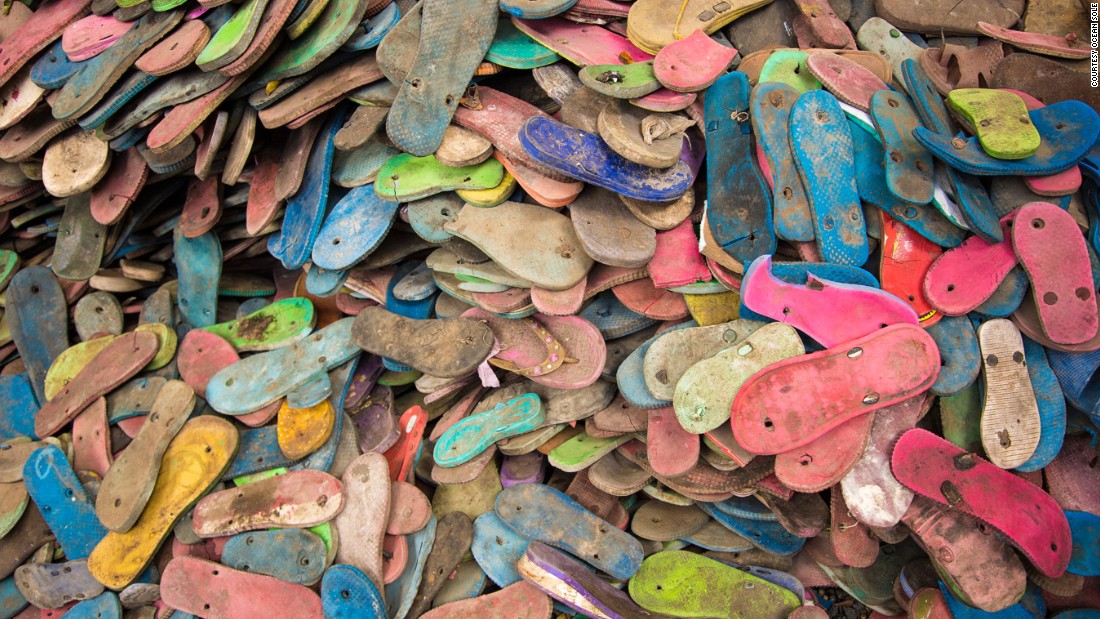Why your flip flops are killing the oceans

All over the world, there are stories of how plastic is filling the oceans and endangering sea life, and with 71 percent of the Earth's surface covered by the ocean, it is something everyone should be worried about. In this trending video, you see the beautiful shores of Watamu on the Kenyan coast looking idyllic and pristine. But when you look further you realize they are not. Because of downstream from the beautiful beaches, you see the startling reality of consumerism with the huge problem of flip flops. Flip flops are known as thongs in Australia, Tsinelas in the Philippines, Zoris in Japan and chinelos in Brazil. Archaeologists have even found an Ancient Egyptian pair of the popular shoes made from leather, that dates back approximately 3,500 years ago. Over three billion people in the world can only afford the flip flop type of shoe, and these people hang on to them, they fix them, they mend them, and they duct tape them, and then usually they discard them. The average lifespan of a flip-flop is about two years. The modern day synthetic rubber flip flop shoe is not going away. And tons of the shoes are washing up on the East African coast.
Reports suggest that at least there are at least eight million tons of new plastic that enter the oceans every year. And by 2050, there could be more plastic than fish in the seas by weight, this according to one estimate. The majority of the plastic debris that ends up in Kenya comes from countries such as Asia, India, and China, Smith. This is because the oceans current spreads it all along the East African coast, that drifts south. Some of the plastic debris will eventually leave the Indian Ocean and make it's way as far as South America. And a large amount of the pollution which is found on the beaches of East Africa's come from discarded flip-flops. With about 90 tons a year of the plastic debris. And Kenya is not completely innocent either, with one company producing 100,000 flip flops a day, many of which, will also enter the waterways. The shoes are not only an eyesore but a direct health hazard, as they have no hope of biodegrading. There are entire beaches covered with flip flops, and with the debris, you will also see dead fish. Fish that had once been trying to eat in their natural habitat, along with fish turtles unable to come up on to land and hatch. The pollution is also killing the plant life, along with the crabs on the sand. There are deserted beaches that used to have communities there that used to be able to fish, and now the whole ecosystem has been ruined by this monstrous increase in marine pollution.
But some people are trying to take this horrible problem and make something good of it. Ocean Sole has trained a team of around 40 artisans in a workshop in Nairobi to craft sculptures from the pre-owned, plastic shoes and make them into a source of income. Ocean Sole is importing flip flops from recycling crews along the East Coast of Africa and from as far away as Zanzibar and repurposing approximately 800,000 flip flops a year. Not all of the recycled sculptures are equal, and range from handheld creations to an 18-foot life-sized giraffe. Sole aims to produce a million products a year.
This is just one of the trending videos you will find on the CNN site. On the site, you will also find new business news, new gadgets, trending news, trending videos, new start-ups and more. **
Learn MORE at CNN
To help with slow website load, we have put all photos for this article here: View photo gallery.







